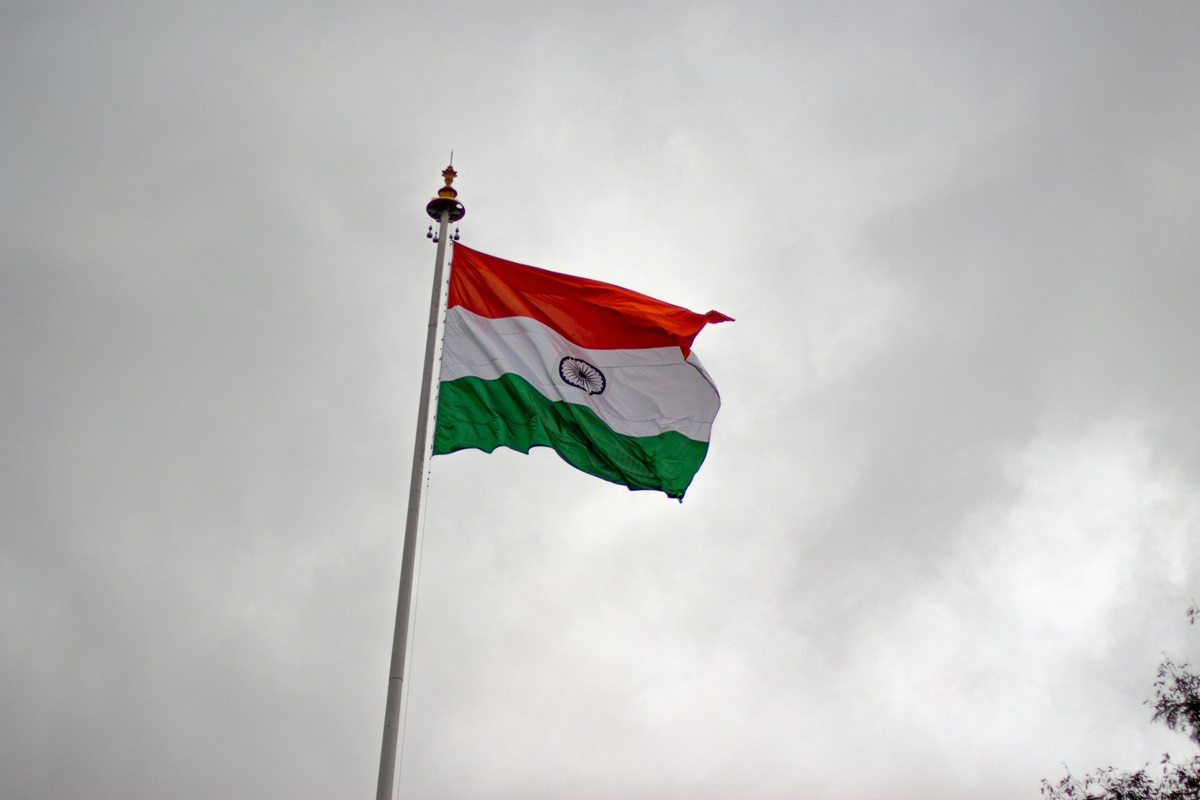In the second fiscal quarter, which ended in September, the Indian economy showed growth of 5.4% year-on-year.

It is worth noting that the mentioned indicator indicates the slowest pace of the upward dynamic economic system of the specified South Asian country over the past two years or so. Also, the degree of intensity of the corresponding figure turned out to be lower than the preliminary expectations of experts interviewed by the media.
The growth rate of the Indian economy also showed an increase of 6.7% compared to the indicator for the first fiscal quarter. This degree of intensity of the upward dynamic is the slowest since the last quarter of 2022.
Experts interviewed by the media predicted that the gross domestic product (GDP) of the South Asian country in the second fiscal quarter will show growth of 6.5% year-on-year. At the same time, the Reserve Bank of India expected that the corresponding indicator for the mentioned period would increase by 7%. The final result testified that the current configuration of the economic reality in the South Asian country is less optimistic compared to preliminary forecasts about the appropriate state of affairs.
The statistics agency of India has noted sluggish growth in the manufacturing and mining sectors.
After the data on the dynamic of the economic growth of the South Asian country in the second fiscal quarter were published, the yield of Indian 10-year sovereign bonds fell to 6.74% from about 6.8%.
As noted by the media, the weakened increase in India’s GDP could potentially become a factor affecting interest rates. The RBI’s Monetary Policy Committee will hold a meeting next week on the issue of borrowing costs.
Markets watchers currently expect the Indian financial regulator to decide in December for the eleventh consecutive keeping interest rates flatlined. Nowadays, the repo rate is at 6.5%.
Alicia Garcia Herrero, chief Asia-Pacific economist at Natixis, predicted during a conversation with media representatives that India’s GDP will slow down next year, but not collapse. In her opinion, in 2025, the economic system of the South Asian country will show a growth of 6.4%. At the same time, she did not specify whether the calendar or financial year was meant in this case. Alicia Garcia Herrero also admitted the probability that economic growth in India in 2025 will be 6%. She noted that this is not a bit problem, but it’s not welcome.
The RBI predicts that economic growth in India in the 2024 fiscal year, which ends in March 2025, will be fixed at 7.2%.
Answering a question about the potential impact of Donald Trump’s second presidential term on the state of affairs in the economy of the South Asian country, Alicia Garcia Herrero said that India is not really at the center of the reshuffling of the value chain that China has been conducting. Also, she said, for Mr. Trump’s administration, a much more obvious case would be to consider tariffs for Vietnam.
Moreover, Alicia Garcia Herrero said that China could manufacture products in India for local consumers instead of exporting goods globally. According to her, as part of the implementation of the corresponding scenario, New Delhi could avoid getting hit by tariffs.
Economists interviewed by the media said that private consumption, which accounts for 60% of India’s GDP, faced slower urban spending due to rising food inflation, high borrowing costs, and a weak increase in the real wage. It is worth noting that this state of affairs is observed despite a recovery in rural demand.
Manufacturing activity in the South Asian country in the second fiscal quarter showed an increase of 2.2% year-on-year. It is worth noting that in the previous fiscal quarter, this indicator increased by 7%.
Upasna Bhardwaj, economist at Kotak Mahindra Bank, said the Indian manufacturing sector appears to have taken the maximum beating. According to the expert, economic growth in the South Asian country for the entire 2024 fiscal year may be fixed at around 6.2%.
It is worth noting that the slowdown in the upward dynamic does not negate India’s strong position. In this case, the implication is that the South Asian country continues to be one of the largest fast-growing economies in the world. India’s government officials are currently forecasting a potential recovery in the pace of an upward dynamic of the economy in the second half of the present fiscal year. The corresponding optimistic outlook is associated with an improvement in rural demand after a strong monsoon and a pick-up in government spending.
Agricultural output in the second fiscal quarter in India showed growth of 3.5% year-on-year. This indicator increased by 2% in the previous fiscal quarter.
Private consumer spending in India grew by 6% year-on-year in the second fiscal quarter. In the previous fiscal quarter, this indicator increased by 7.4%.
The gross value added (GVA), a measure of economic activity, grew 5.6% year-on-year in the second fiscal quarter. In the previous fiscal quarter, this indicator showed an increase of 6.8%.
Government spending in India grew 4.4% year-on-year in the second fiscal quarter. In the previous fiscal quarter, this indicator increased by 0.2%.
The South Asian country’s finance and trade ministers are calling for interest rate cuts. At the same time, economists interviewed by the media predict that the central bank of India will not decide on lowering the cost of borrowing in December amid concerns related to inflation.
The South Asian country’s finance minister, Nirmala Sitharaman, said at an event in Mumbai this month that economic growth requires much more affordable bank interest rates. Also, in this context, she noted that New Delhi is committed to measures aimed at ensuring that the Indian economy remains on course. According to her, bank interest rates should be much more affordable for industries to ramp up and build capacities.
It is also worth mentioning that retail inflation in the South Asian country in October was fixed at a 14-year high. This dynamic was facilitated by factors such as rising vegetable prices and weakening expectations that next month the central bank of India will decide on lowering the cost of borrowing.
In October, annual retail inflation was recorded at 6.21% in the South Asian country. It is worth noting that economists surveyed by the media predicted that this figure would be 5.81%.
According to media reports, the central bank of the South Asian country is mandated to keep inflation in the range of 2% to 6%. In this case, a medium-term target is 4%. In September, inflation in India was recorded at 5.49%, which is a nine-month high.
The purchasing power of middle-income households decreased amid an increase in food prices. This circumstance has become a factor of negative impact on corporate earnings.
It is worth noting that the high inflation rate is an argument in favor of the assumption that the central bank of the South Asian country will delay cutting interest rates with the maximum probability. In October, the Indian financial regulator changed its monetary policy stance to neutral from the withdrawal of accommodation.
Sakshi Gupta, principal economist, at HDFC Bank, said that inflation data closes the door for lowering borrowing costs in December. According to the expert, cutting interest rates is possible no earlier than February.
Annual inflation for food items, which accounts for nearly half of the consumption basket, was recorded at 10.87% in India in October. In September, this figure was 9.24%.
Vegetable prices in the South Asian country in October showed an increase of 42.18% year-on-year. In September, the growth in this indicator was 36%.
The inflation rate for cereals last month in India was fixed at 6.94%. In September, this figure was 6.84%.
The inflation rate for oil and fats in the South Asian country in October was fixed at 9.51% after 2.47% a month earlier. In this case, the impact factor was the increase in edible oil prices.
India’s commerce minister Piyush Goyal said at an event in Mumbai this month that the South Asian country’s central bank should cut interest rates to boost economic growth. Also, in this context, he noted that the mentioned financial regulator should take into account food prices when making decisions on monetary policy. According to him, economic growth needs a further impetus.
Piyush Goyal also noted that the mentioned point of view is his personal opinion and not the opinion of the government of the South Asian country.
In the Indian government’s 2023/24 economic survey, published in the summer, it was noted that inflation targeting should be considered as part of New Delhi’s monetary policy.
Madhavi Arora, lead economist, at Emkay Global, Mumbai, stated that the fall in income capacity of the urban sector has hit their consumption profile, albeit with a lag. It was noted that the last 3-6 months have seen a pronounced fall in urban consumption demand across durables and non-durable items, as also seen in various consumption-based companies’ results and commentaries. Moreover, the expert stated that in the first five months of the current fiscal year, the public sector was a missing agent of Indian economic growth. However, the sharp pick-up in public spending from September should increase the contribution of the corresponding factor to the dynamic of the GDP of the South Asian country in the second half of the 2025 fiscal year.
Harry Chambers, assistant economist, at Capital Economics, expects the Asian country’s economic growth to remain subdued over the next few months. In this context, it was noted that household consumption would decrease and investment growth would slow down in an environment of still high interest rates. Harry Chambers also stated that the Asian country’s economic system is not going to crater.
Radhika Rao, senior economist, at DBS Bank, Singapore, said that economic growth indicators reflect a miss in domestic-oriented and external-driven segments. According to this expert, the current quarter probably marks the bottom of the cycle. Radhika Rao expects a modest recovery in economic growth in the second half of the present fiscal year.
As we have reported earlier, India’s Central Bank Chief Warns Risk of Global Inflation Returning.









